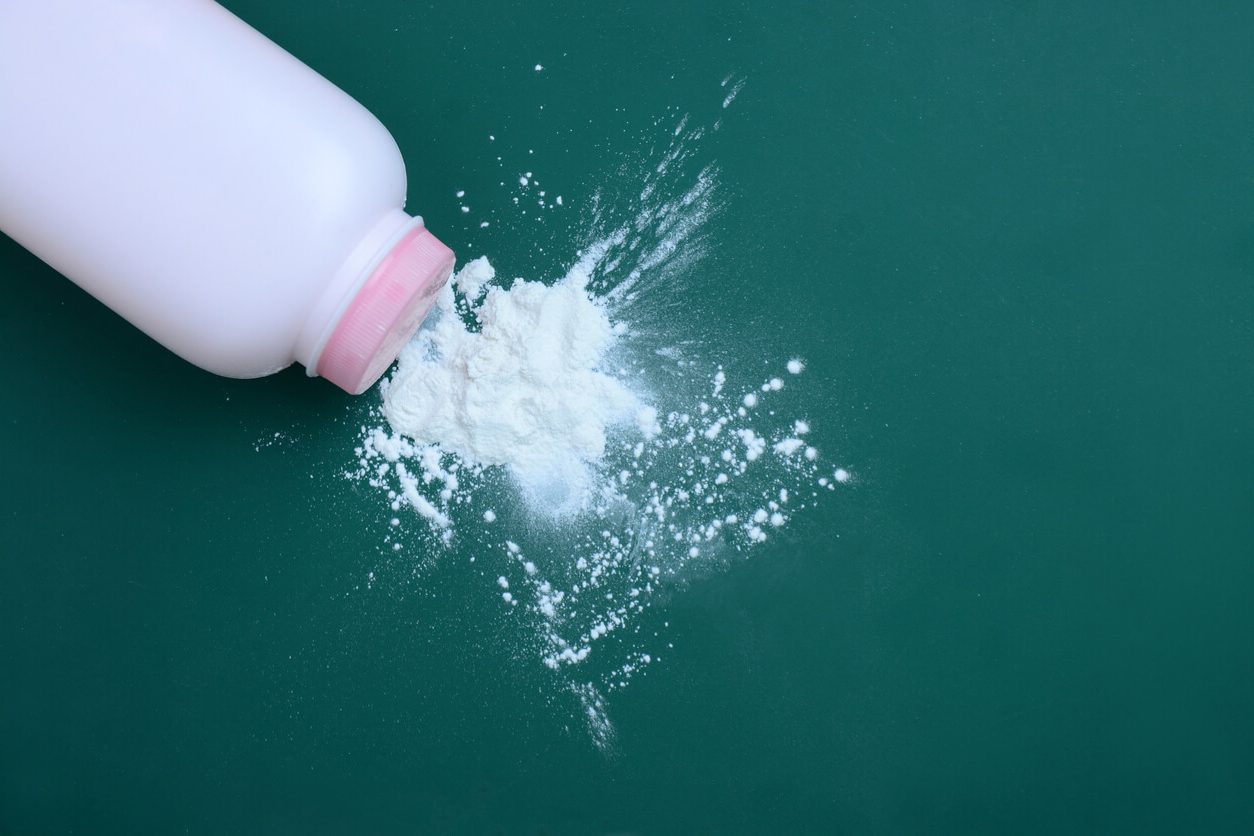Talcum Powder & Ovarian Cancer Lawsuits: A Q&A with Trial Attorney Trent Miracle
Editors carefully fact-check all Drugwatch.com content for accuracy and quality.
Drugwatch.com has a stringent fact-checking process. It starts with our strict sourcing guidelines.
We only gather information from credible sources. This includes peer-reviewed medical journals, reputable media outlets, government reports, court records and interviews with qualified experts.

Johnson & Johnson is facing more than 16,500 talcum powder lawsuits consolidated in a multidistrict litigation, or MDL, in New Jersey federal court, and thousands more in state courts across the country.
The lawsuits claim that the company knew for decades that its Shower-to-Shower and Johnson’s Baby Powder products could cause ovarian cancer but kept the knowledge from the public.
Johnson & Johnson has stood by its claim that its products are safe and don’t cause cancer. Meanwhile, juries have returned billions in verdicts for plaintiffs in state court cases.
According to trial attorney Trent B. Miracle, Johnson & Johnson could face thousands more lawsuits from women who have used its baby powder as part of their intimate personal hygiene routine.

Miracle leads the Pharmaceutical Litigation Group at the top-ranking national law firm Simmons Hanly Conroy. He and his team have helped secure close to $360 million in settlements for people harmed by drugs and medical devices manufactured by pharmaceutical giants, including Johnson & Johnson.
Miracle and his team have extensive experience handling complex litigation and have been at the forefront of talcum powder litigation. In this Q&A, Miracle explains why people are suing, discusses the latest developments in this litigation and explains how people who used Johnson & Johnson’s talcum powder products may qualify to file a lawsuit.
Q: Can you discuss when people began filing talcum powder lawsuits against Johnson & Johnson and why people are suing?
People were using what was historically thought to be one of the most harmless products on the market. People have been using it for decades, and no one thought there was a problem with it.
The science linking intimate personal hygiene use of talcum powder products, including Johnson’s Baby Powder and Shower to Shower, to ovarian cancer started to solidify over the course of the past seven or eight years.
Attorneys like ourselves were looking at it and thought, “If this is real, there is going to be a huge constellation of people who are going to be impacted by this that just didn’t even realize it because there was no widespread acknowledgment that this could be an issue.” There were never any warnings on these products. Those of us who are parents were thinking to ourselves, “Who didn’t use baby powder when they were changing diapers on their kids?”
These studies started coming out, and they showed that sometimes an ovarian cancer diagnosis isn’t just bad luck or genetics. We saw more and more that the science was showing a relationship between talcum powder usage and ovarian cancer, and more evidence linked talcum powder usage to ovarian cancer.
That’s when people diagnosed with ovarian cancer started suing Johnson & Johnson.
Q: There have been claims that talc itself causes ovarian cancer and others that say asbestos — a substance recognized as a carcinogen — in the talc is to blame. For years, Johnson & Johnson has denied its talc contained asbestos. Then, in October 2019, the FDA found asbestos in Johnson’s Baby Powder, and J&J recalled 33,000 bottles of the product. What is the current science on the link between talcum powder and ovarian cancer?
I don’t think anyone can say with 100 percent certainty how many lots contained asbestos over the course of time that talcum powder has been sold. Asbestos is known to be carcinogenic. It’s widely known to cause lung cancer, specifically mesothelioma. And frankly we’ve been involved in a lot of litigation involving this particular product in people with mesothelioma. So they have lung cancer but not cervical or ovarian cancer.
What we have to go on are epidemiological studies which show the variation between who used talcum powder in the genital area for personal hygiene and who didn’t use talcum powder and what percentage of those people ended up getting ovarian cancer. What is the mechanism that would cause the ovarian cancer in those types of instances? It’s typically things like inflammation of tissues over time that can turn into cancer.
When you don’t have a pathology report that shows asbestos fibers in the tissue, you have to go with what the science tells you, and that is, more likely than not, if you used talcum powder over an extended period of time you are much more inclined to get ovarian cancer.
It’s very disconcerting to think that talc particles can be found in ovarian cancer tumors. The prevailing theory on how that happens is that it matriculates through the Fallopian tubes until it gets to the ovaries. But the fact that it can actually happen is disconcerting.
Generally, it happens in people that have used talcum powder for a long time. But a long time is relative. Some people used it for decades. We’ve got somebody we’re talking to who used it over a couple of years and got diagnosed. But the reality is most of these people who are using it are long-term users. This isn’t one of those situations where somebody uses it hit or miss. This is a part of their daily routine over decades.
Q: Recently, U.S. District Judge Freda Wolfson, the judge overseeing the talcum powder litigation against Johnson & Johnson, made a key ruling called a Daubert ruling. Some called it a major victory for plaintiffs. But in a statement, J&J claims the ruling benefits the defense. Can you explain the ruling and how it impacts talcum powder lawsuits?
Oftentimes in products liability cases or pharmaceutical litigation, there are types of motions that are called Daubert motions. They can dismiss the entirety of the litigation because the judge who is presiding over the case doesn’t buy into the science, doesn’t believe it’s supported scientifically and denies the plaintiffs the opportunity to bring those experts to trial. And if you don’t have experts in these cases, you can’t prove either general causation or causation specific to the particular plaintiff who’s having their case tried in that instance.
Defendants filed motions that basically said there’s no scientific basis for the opinions of these experts that say talcum powder can cause ovarian cancer. And J&J took the position that it’s “junk science, it’s always been junk science, they can’t prove their case and because of that, judge, you should throw all these cases out.”
The April 27, 2020, Daubert ruling essentially allows plaintiffs’ experts to testify at trial. The judge didn’t necessarily come out and affirmatively say, “Yeah, I buy all the arguments that talcum powder could cause ovarian cancer.” What she did say was that they were scientifically plausible — not junk science — and that it was going to be up to a jury to decide whether they believed it or not.
At the same time, plaintiffs filed Daubert motions as they related to defendants experts, and that happens all the time in these types of cases. They’re trying to narrow the expert’s opinions down so they can block whatever defense the defendants can bring at trial.
The reason J&J is saying that this is a win for them is because their experts are also allowed to testify.
So the experts on both sides get to testify at trial. And it’s going to be up to a jury to make the determination, which is how it ought to be.
Q: There have been some large jury verdicts in these cases, some of which have been overturned after appeal. Can you discuss some of the key verdicts and what they mean for plaintiffs who haven’t been to trial yet?
The reality is, especially in Missouri, the verdicts that are overturned are procedural in nature. These aren’t situations where they got overturned because the science was not substantial enough or the evidence that got presented at trial was not substantial enough for a jury to believe that there is a specific link between talcum powder usage and ovarian cancer.
These are typically getting overturned for jurisdictional reasons. We can always fix whatever appear to be jurisdictional issues in the case. In the MDL, there are no jurisdictional issues. So all you are left with is proving the link between the usage and the injury. That’s not been a problem in these trials. They are proving the usage and the linkage in the injury. Getting booted out on jurisdictional grounds after the fact is one thing. But if you are getting kicked out after the fact on scientific grounds, that the experts were in adequate or insufficient, or evidence improperly got to the jury, that’s another thing entirely, and that hasn’t happened.
The cases that were overturned have all been state cases. Nothing has been tried in the MDL. Everyone that has a case in the MDL is properly before the court in the MDL. So now that we’ve gotten the Daubert ruling, we know what the state of play is from an expert scientific standpoint. All we have to do is get in front of the jury and convince them that using baby powder caused ovarian cancer in these plaintiffs.
Q: What are the benefits of being a part of an MDL?
The main benefit of being a part of an MDL for anybody is the cost.
If we just took a one-off talc case and filed it as an individual claim in some state court somewhere in the country and litigated that case by itself, took it to a jury, tried that case — that case would cost half a million dollars to try, easy. Between having to take depositions, experts, try the case, all of it. That half a million dollars would come off the top of any recovery any individual client would get.
In an MDL, those expenses are borne over the entire universe of claimants in the MDL. And there are about 16,000 plaintiffs in the talcum powder MDL currently. So take a half a million dollars and spread it evenly over 16,000 people. It’s very different math that you are talking about and a very different cost-benefit analysis if you are a plaintiff.
Rulings on general discovery and the general discovery itself apply to all cases in the MDL, and that evidence applies across all plaintiffs. So you don’t have to do that for each individual plaintiff, taking up who knows how much time and how much expense in each of those instances. Likewise, if you went back to back to back, trial after trial after trial of 16,000 claimants, we’d be here 100 years from now and still not get through all of it.
Q: Have there been any settlements in the talcum powder litigation?
So far, there haven’t been any settlements in these cases, and we haven’t been to trial with any MDL case yet.
Q: On average, how long does it take to resolve a complex litigation?
Typically speaking, any complex products liability case on average can last between three and seven years. In this case, because of COVID-19, getting to trial may take longer.
Q: Can people who believe Johnson & Johnson’s talcum powder products caused them or a loved one to be diagnosed with ovarian cancer still file a lawsuit, and how do they know if they qualify?
Yes, the litigation is still ongoing, and we’re still accepting cases. Generally speaking, if you used talcum powder for hygiene purposes at any point in your life and got diagnosed with ovarian cancer, it’s a case we want to talk to you about.


